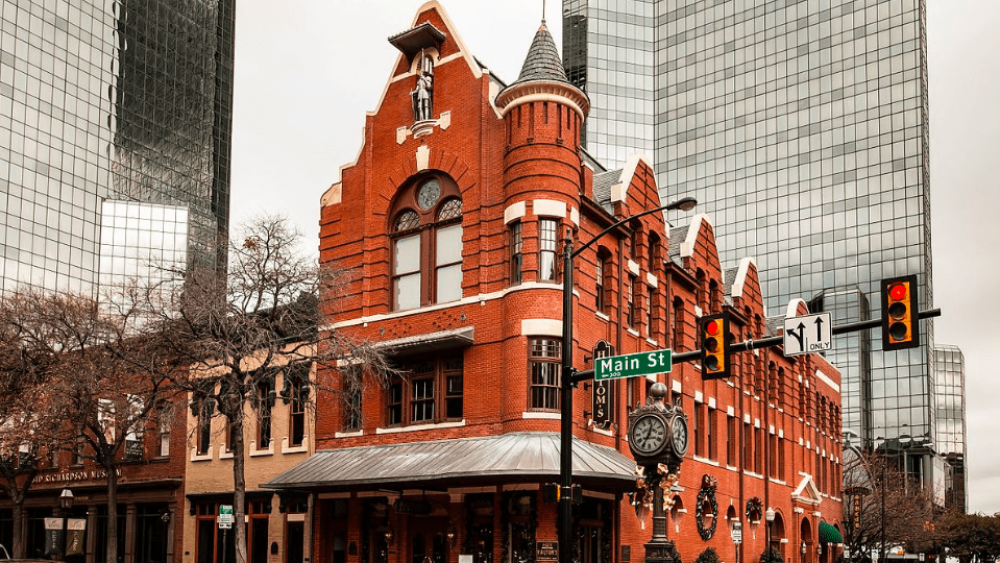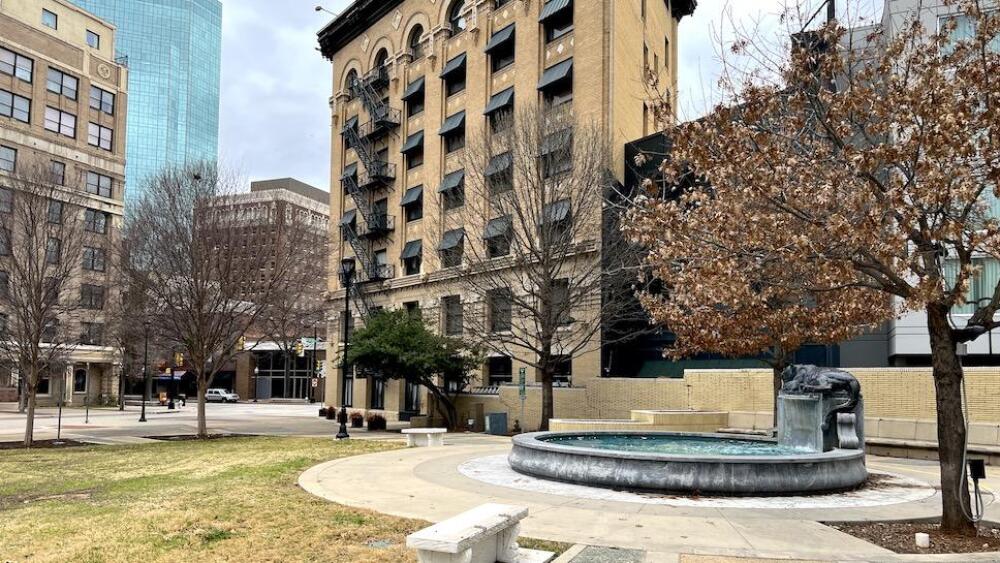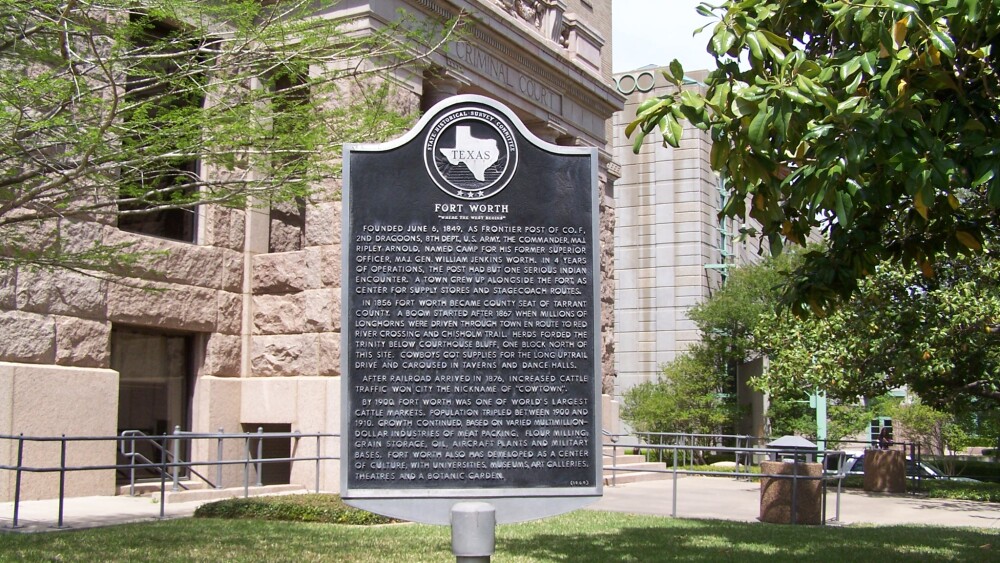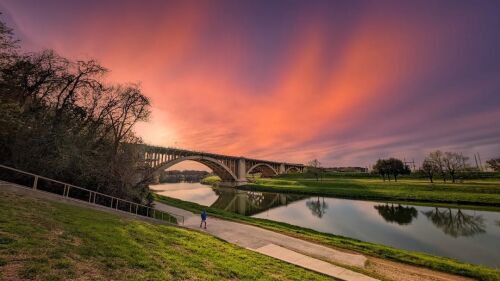We’ve all been there: Someone’s trying to give you directions by describing 10 lefts, 20 rights, and a jumble of cardinal directions. Isn’t it easier to just point out a landmark?
That’s exactly what we’re doing. We’re sharing 16 of the most recognizable Fort Worth landmarks — from the Livestock Exchange Building to the Tarrant County Courthouse. Not only are these local icons easy to remember, they’ll also get you where you need to go in a jiffy.

Will Rogers Memorial Center is a major venue for all kinds of cultural and sporting events.
Photo by @photogkeith
Will Rogers Memorial Center
3401 W. Lancaster Ave.
Nearby: Dickies Arena, Casa Mañana
Originally opened in 1937, the 120-acre entertainment complex was designed by Wyatt Hedrick of Herman Koeppe and is listed on the National Register of Historic Places.

You can see the red “Montgomery Plaza” sign from miles away.
Photo by @FTWtoday
Montgomery Plaza
2600 W. Seventh St.
Nearby: Trinity Park, Firefighters Memorial
In 1928, retail and mail-order company Montgomery Ward built one of its nine regional centers near the Trinity River. Constructed by Thomas Sneed Byrne, the eight-story, U-shaped building is Mission Revival style with a curved parapet and arching windows. It is now a bustling retail, restaurant, and residential center.
Fort Worth Convention Center
1201 Houston St.
Nearby: Omni Fort Worth, Water Gardens
The convention center was built in 1968 and was purchased by the city from Tarrant County in 1997. The first phase of the major renovation project is currently underway; the highest structural steel beam was hoisted into place back in August, marking a major milestone for the project.
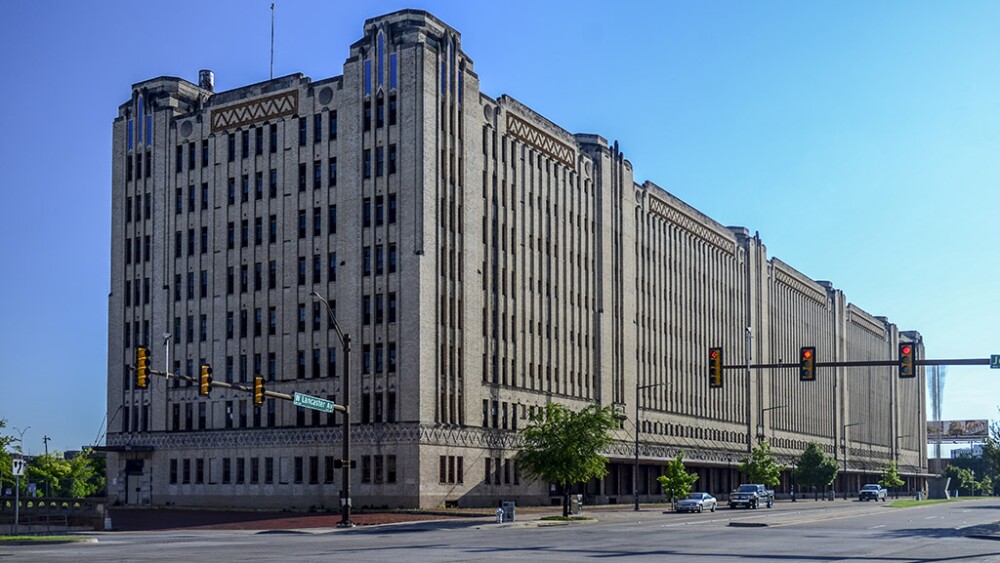
Constructed in 1931, the Texas & Pacific Warehouse downtown is a Highly Significant Endangered Landmark.
Photo by Architecture in Fort Worth
Texas & Pacific Warehouse
300 W. Lancaster Ave.
Nearby: T&P Station, Water Gardens
Constructed in 1931, the Texas & Pacific Warehouse downtown is a local Highly Significant Endangered Landmark and listed on the National Register of Historic Places. The building was designed by Wyatt C. Hedrick in the Zig-Zag Moderne and is Art Deco style.
Knights of Pythias Building
315 Main St.
Nearby: Sundance Square, Tarrant County Courthouse
The first Pythian Castle Hall was built in 1881 — after a tragic fire, it was rebuilt in 1901 and served as the city’s first coin-operated laundry + first offset printing press. It’s now a Recorded Texas Historic Landmark and houses Haltom’s Jewelers.
Livestock Exchange Building
131 E. Exchange Ave.
Nearby: Stockyards Station, Mule Alley, Billy Bob’s Texas
This adobe-style building, once known as “The Wall Street of the West,” was built in 1902 and served as a center for cattle traders. The North Fort Worth Historical Society Museum is now inside the building and the Fort Worth Herd cattle pens are just behind it.

The Ball Eddleman McFarland House is currently home to Historic Fort Worth. | Photo via @plastikdust
Ball-Eddleman-McFarland House
1110 Penn St.
Nearby: First Presbyterian Church of Fort Worth, Fort Worth Masonic Temple
This Victorian-style home was built in 1899 and features red sandstone. The Junior League of Fort Worth bought it in 1979, and it was later acquired by Historic Fort Worth, Inc., which hosts tours.

The Burk Burnett Building was designed by Sanguinet & Staats and built in 1914.
Photo courtesy of Wikimedia Commons
Burk Burnett Building
500 Main St.
Nearby: Sundance Square, Tarrant County Courthouse
The neoclassical building was erected in 1914 and was once the tallest building in the city with 12 floors. It was originally occupied by the State National Bank and was listed on the National Register of Historic Places in 1980.
Flatiron Building
1000 Houston St.
Nearby: Hyde Park, Convention Center
When it was built in 1907, it was one of the city’s first steel-frame buildings + the tallest in North Texas. If you look closely, you can see panther heads carved into the side of the building that commemorates our city’s nickname of “Panther City.”

The Tarrant County Courthouse can be seen from miles away | Photo by @dallasfortworthphotography
Tarrant County Courthouse
100 E. Weatherford St.
Nearby: Sundance Square, Heritage Park, Paddock Park
The courthouse was built for an estimated $400,000 in 1893-1895 to resemble the state capitol with pink Texas granite. The building houses the Tarrant County clerk’s office, probate and county courts of law, a law library, and the Tarrant County facilities management department.
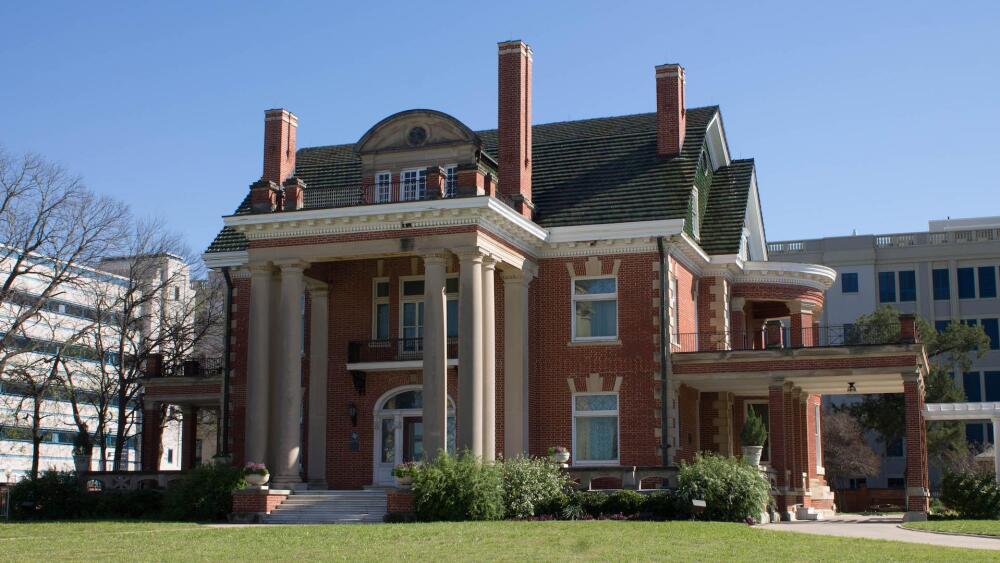
Thistle Hill is also known as the Wharton-Scott House. | Photo via Renelibrary
Thistle Hill
1509 Pennsylvania Ave.
Nearby: Cook Children’s Hospital
This Georgian-style mansion was built in 1903 and was the city’s first designated landmark in 1978. The home once held lavish dinners and parties for the city’s powerful and elite. It was restored in 1912 and listed on the National Register. Cook Children’s Hospital is currently renovating the building for special events.
Log Cabin Village
2100 Log Cabin Village Ln.
Nearby: Fort Worth Zoo
The village is home to a museum dedicated to the preservation of both the architecture and way of life from the 1800s. The six log cabins were moved to the village site and restored in the 1950s and early 1960s. The buildings were later donated to the city to preserve the log structures that were rapidly disappearing from Texas architecture.

The Van Zandt Cottage became a Recorded Texas Historic Landmark in 2012
Photo courtesy of Wikimedia Commons
Van Zandt Cottage
2933 Farm House Way
Nearby: Trinity Park
Built between 1850 and 1860, the historic home is listed on the National Register of Historic Places and is part of the Log Cabin Village. It is the oldest home in town on its original foundation and was one of the early homes of Confederate Major K.M Van Zandt.

The small two-story building was named after businessman and former mayor William Bryce. | Photo by Fort Worth Architecture
Bryce Building
909 Throckmorton St.
Nearby: Sundance Square
The Renaissance Revival-style office building was constructed in 1910 and is known for its odd five-sided shape. It was added to the National Register of Historic Places in 1984 and currently houses a law firm.
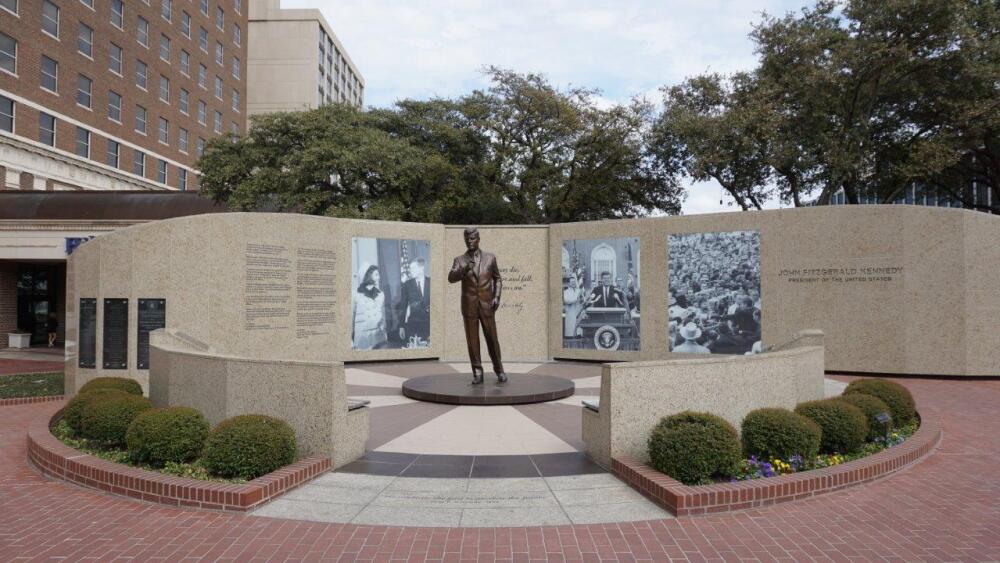
The tribute is located in General Worth Square. | Photo by Presidents USA
JFK Tribute
916 Main St.
Nearby: General Worth Square
Dedicated May 29, 2012, the JFK Tribute stands as a memorial to the 35th president of the United States, John F. Kennedy. The grounds — located outside what was once the Texas Hotel — are where President Kennedy made his last public speech to thousands of Fort Worthians. The tribute is comprised of an 8-foot-tall bronze statue of the president, sculpted by the late Texas artist Lawrence Ludtke.
Heritage Trails
Various locations
Nearby: Sundance Square + Downtown
Take a stroll through downtown and discover the people and events that shaped Fort Worth’s rich history. Stopping points on the trail celebrate everything from the city’s diverse architecture to the first streetcars and Hell’s Half Acre.




